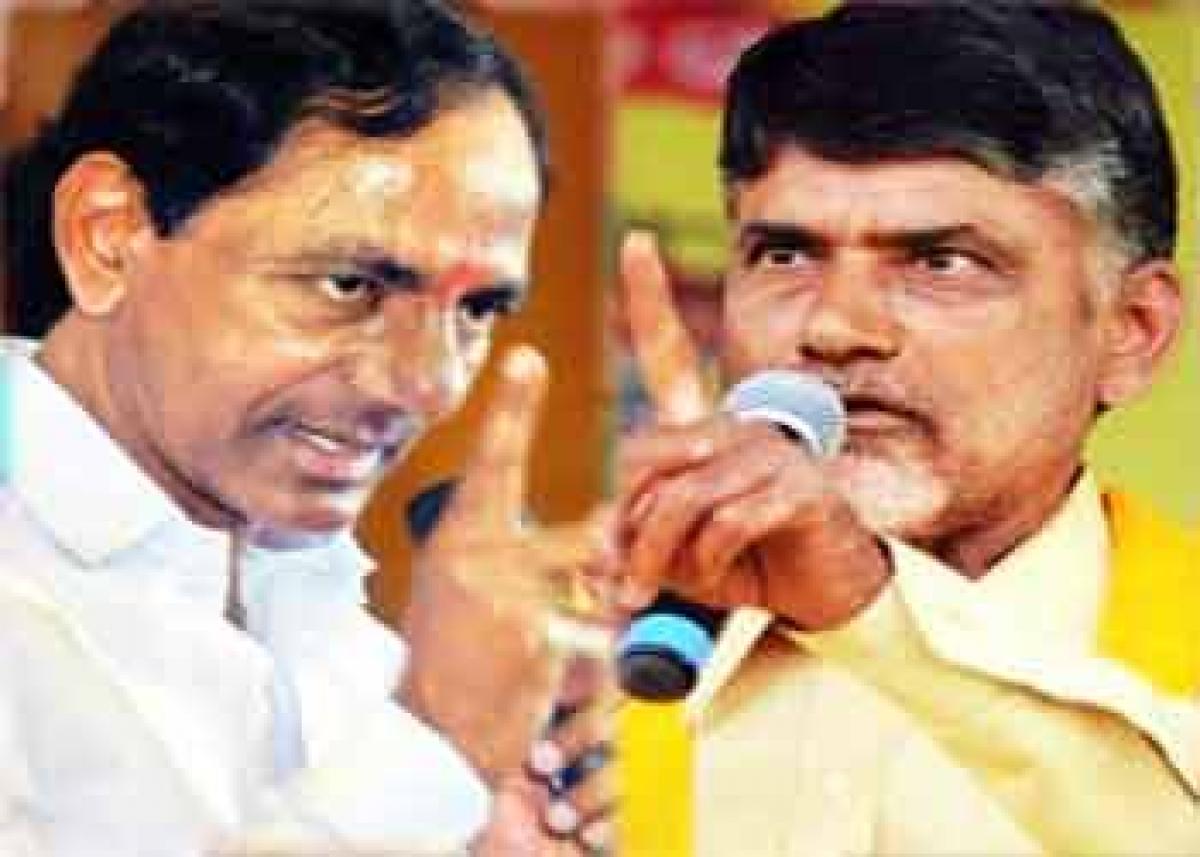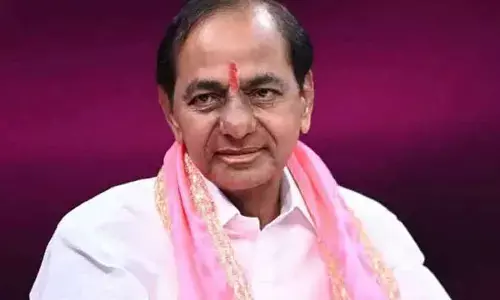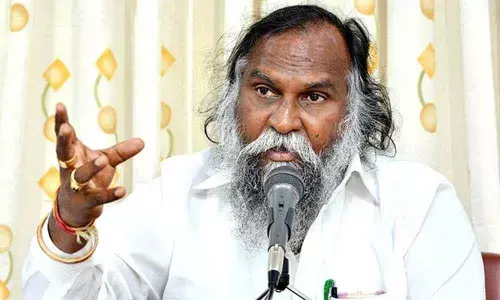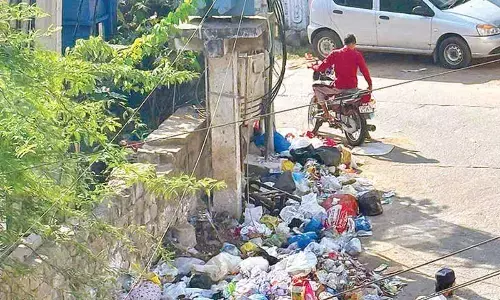The power game

The two Telugu states are locked in a fierce battle over the power issue. The under- lying political current is further heat- ing up the power imbroglio. The two states seem to be more interested in reaping
 Reasoning and spirit of accommodation is held hostage to belligerent posturing and acrimonious criticism. The two chief ministers have successfully diverted the people’s attention. Thus the complex power issue turns out to be a win-win situation for both K Chandrasekhar Rao and N Chandrababu Naidu. Abusive rhetoric by KCR would further vitiate the atmosphere. Instead, the path of negotiations would bring power to the fields and houses of Telangana. The other side should also realise that political battles should never be fought at the cost of people’s interests
Reasoning and spirit of accommodation is held hostage to belligerent posturing and acrimonious criticism. The two chief ministers have successfully diverted the people’s attention. Thus the complex power issue turns out to be a win-win situation for both K Chandrasekhar Rao and N Chandrababu Naidu. Abusive rhetoric by KCR would further vitiate the atmosphere. Instead, the path of negotiations would bring power to the fields and houses of Telangana. The other side should also realise that political battles should never be fought at the cost of people’s interests
The two Telugu states are locked in a fierce battle over the power issue. The under- lying political current is further heat- ing up the power imbroglio. The two states seem to be more interested in reaping the political dividend by rousing the sentiment rather than finding an amiable solution to the vexed question.
Reasoning and spirit of accommodation is held hostage to belligerent posturing and acrimonious criticism. The two chief ministers have successfully diverted the people’s attention. Thus the com- plex power issue turns out to be a win-win situation for both K Chan- drasekhar Rao and N Chandrababu Naidu.
Before analysing the contours of the controversy over the distribution of power, let’s look at the underlying power conflict which is of political nature. The TRS through its Opera- tion Akarsh has dealt a debilitating blow to Telugu Desam Party. The TRS is further determined to deci- mate TDP politically in Telangana. The reason for this is the firm belief of KCR that TDP with its grassroots organisational presence can pose a threat to TRS at any point of time.
Annoyed by KCR politics, Chan- drababu Naidu threw a googly in the form of arm-twisting Telangana government on the power issue. Chandrababu knows well that KCR’s position is vulnerable when it comes to the power issue. It all started with Chandrababu Naidu government deciding to stop the power production in Srisailam Right Bank that falls in Andhra Pradesh.
Besides, the Andhra Pradesh government approached the Krishna Board to ensure that even the Telangana government stops hy- del power production at the Sri- sailam Left Bank project that falls in this state. Chandrababu Naidu’s contention is that Rayalaseema would be starved of water, if Telan- gana continues to produce power in Srisailam. How far is this argument? A perusal of relevant GOs issued in united Andhra Pradesh would give the answer. These GOs hold the ground till new orders are given.
The GO 69 issued on June 15, 1996 by the then Telugu Desam gov- ernment of Chandrababu Naidu himself is the first reference point. This GO reads as follows: ... No drawals are to be made at Srisailam reservoir for power generation ... below the reservoir level of 834 ft, which is the minimum draw down level (MDDL). The GO 107 released on Septem- ber, 28, 2004, is the next reference point.
This GO reads as follows: ... the government hereby orders that the MDDL of Srisailam project is 854 ft, and releases at this level and even below can be made on government orders from time to time ... (In fact the Telugu Desam Party then opposed the government’s move to increase MDDL at Sri- sailalm from 834 feet to 854 feet). A plain reading of the above said GOs makes it amply clear that Telangana government is well within its right to produce power over and above the reservoir water level of 854 ft.
Chandrababu Naidu not only stopped power production at the Right Bank but even sought the Telangana government to do the same at the Left Bank when the wa- ter level is reportedly at about 870 ft. The water level at Srisailam re- mained at 856 ft on Tuesday even before the fresh releases came to the reservoir due to rains in the upper stream.
This indicates that Andhra Pradesh government sparked off a needless controversy by writing to Krishna Board. Let’s now look at the concerns of Rayalseema region which Naidu cited to demand shut- down of power at Srisailam. The GO 233 issued on December, 19, 2005 reads as follows: The available water supply com- ponent of Telugu Ganga project have assured allocation of 34 TMC (19 TMC for SRBC and 15 TMC for Telugu Ganga ).
The balance re- quirement of Telugu Ganga project and Galeru Nagari Sujala Sravanti have to depend upon the flood flow of Krishna water. .. The relevant GOs on according priority in water use at Srisailam put only the water supply to Madras city and Hyderabad above the hydro power generation under Srisailam reservoir.
All the other power and irrigation requirements follow. Therefore the Andhra Pradesh gov- ernment cannot by right demand stoppage of power production at Sri- sailam when the water level in the reservoir is above the level pre- scribed by the relevant GOs quoted above. In case the Andhra Pradesh government wants to maintain higher level of water assuming fu- ture requirements, if any, it can only do so through negotiation with the Telangana government and by of- fering compensatory power.
But any such spirit of negotiation is completely missing on both sides. However, the TDP refers to offer of 300 MW of power to Telangana made by Andhra Pradesh Chief Minister. It is true that Naidu made such an offer. But, Telangana gov- ernment maintained that it cannot forego power to the tune of 900 MW at Srisailam for a mere 300 MW offered by Andhra Pradesh. But , hydel power is normally pro- duced during peak hours only.
If the offer of 300 MW is for round-the- clock, it would be 900 MW during peak hour. This can be worked out by both the governments through talks. The Telangana government should have accepted the 300 MW offered by Andhra Pradesh as water can be used for irrigation or power at the later periods. Besides, the Telangana government would have addressed the concerns of Andhra Pradesh by assuring that it would not produce power detrimental to latter’s interest.
Any articulation of rights, however genuine they may be, will not solve the power crisis. Abusive rhetoric by KCR would further vitiate the atmosphere. In- stead, the path of negotiations would bring power to the fields and houses of Telangana. The other side should also realise that political battles should never be fought at the cost of people’s interests








